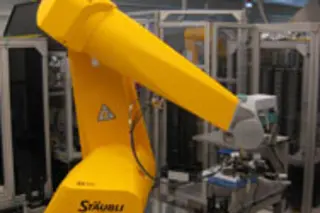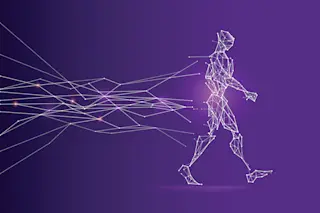Over recent months, in José del R. Millán’s computer science lab in Switzerland, a little round robot, similar to a Roomba with a laptop mounted on it (right), bumped its way through an office space filled with furniture and people. Nothing special, except the robot was being controlled from a clinic more than 60 miles away—and not with a joystick or keyboard, but with the brain waves of a paralyzed patient.
The robot’s journey was an experiment in shared control, a type of brain-machine interface that merges conscious thought and algorithms to give disabled patients finer mental control over devices that help them communicate or retrieve objects. If the user experiences a mental misfire, Millán’s software can step in to help. Instead of crashing down the stairs, for instance, the robot would recalculate to find the door.
Such technology is a potential life changer for the tens of thousands of ...















